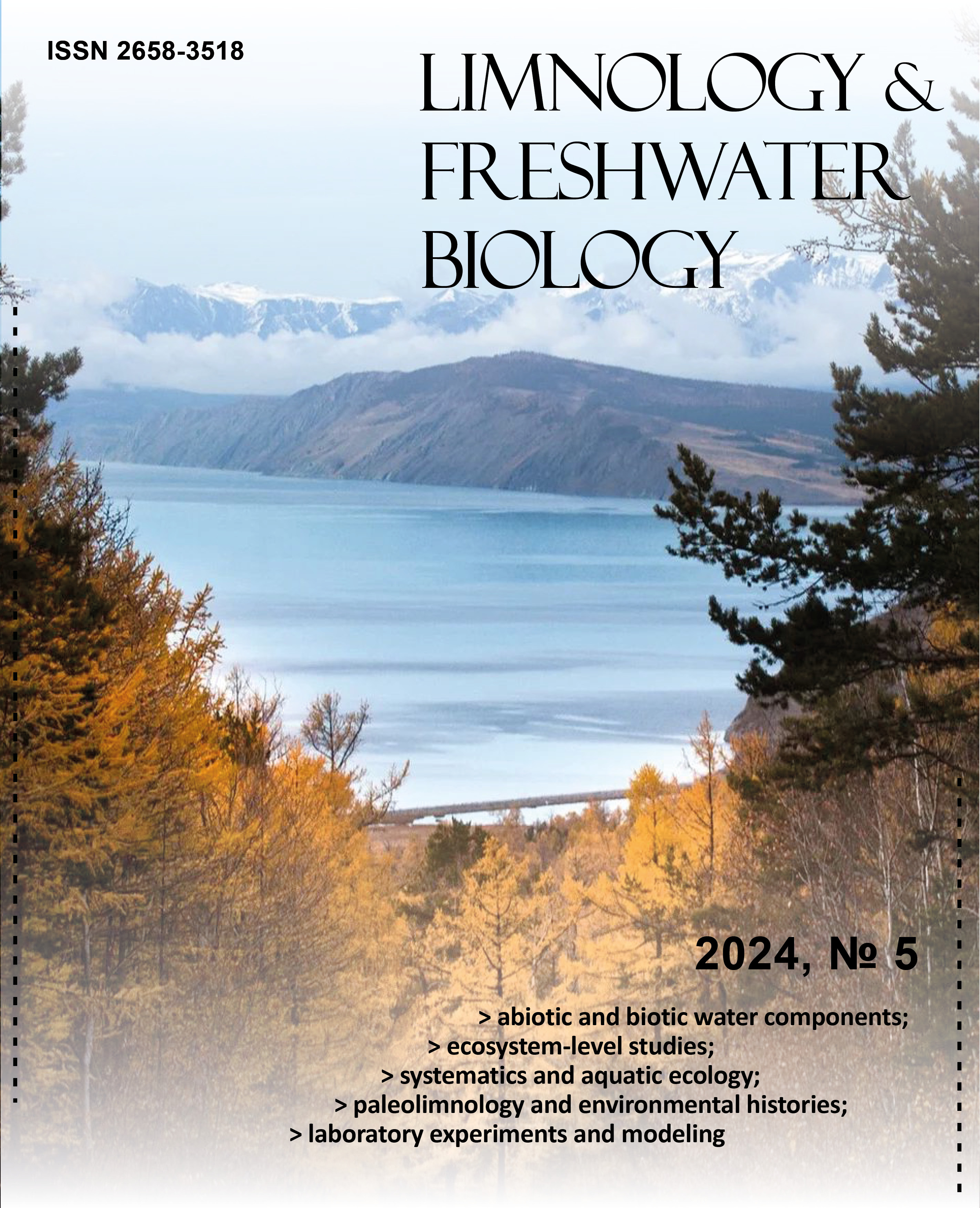Diversity of fishery resources and catch efficiency of fishing gears in the Feni River (Bangladesh)
DOI:
https://doi.org/10.31951/2658-3518-2024-A-5-1196Keywords:
The Feni River, abundance, fish diversity indices, CPUE, total catchAbstract
A thorough examination of fish diversity indices, gear efficiency, catch composition, and decline causes of fish diversity was carried out in the Feni River (Bangladesh). Monthly data collection took place from July to December 2023 at three stations of the river. A total of 8 fish species under 7 orders and 8 families were recorded. The order Perciformes was the most prevalent, representing 30% of the total. Approximately half of the identified species are classified as least concern, while the remaining 4 species are classified as Not Threatened (12.5%), Vulnerable (12.5%), Endangered (12.5%), and Critically Endangered (12.5%). The mean values of the Margalef’s richness (d), Pielou’s evenness (J), Simpson’s index (1-D), Shannon-Weaver diversity (H), and 0.973±0.002 were calculated as follows: 1.720±0.139, 0.699±0.112, and 0.248±0.034, respectively. Based on the Bray-Curtis similarity matrix, two groups were observed at a similarity of 58% within six months across the three sites. The chandi net and ghera net recorded the highest CPUE (kg gear-1day-1) at 5.93±0.966 and 0.53±0.041, respectively. The highest fish catch was recorded in July (2249 ± 668.71 kg), while the lowest was in October (1564 ± 465.05 kg). There was no significant difference (p>0.05) in the monthly fish catch. Fish biodiversity in the Feni River is declining day by day as a result of pollution, overfishing, the use of harmful gear, and a lack of optimal water and pollution. To improve and conserve fish species in the Feni River, it is strongly advised that appropriate fishery management techniques should be applied, that overfishing be closely monitored, and that fishermen be made more aware of their rights.
Downloads
Published
Issue
Section
License
Copyright (c) 2024 Limnology and Freshwater Biology

This work is licensed under a Creative Commons Attribution-NonCommercial 4.0 International License.

This work is distributed under the Creative Commons Attribution-NonCommercial 4.0 International License.







